What happened in my garden this week? It was a very productive and eventful week. Battles won against pests, wonderful harvests and beautiful progress.
This has been an eventful week for my survival container garden, to say the least. From saving perennials from pests, to sowing new seeds, to multiple harvests of greens and berries. It has been a productive week for me and it has been a beautiful week of progress for my plants.
Pest control and management
My garden is completely organic and as such, I do not use pesticides. Instead, I use natural methods to protect my plants against pests. This is especially important given that I am to eat what I grow.
Slugs
It rained multiple times this week and the plants loved it. What they didn’t care for, however, was the many slug babies that came with it. Attracted by the wet and humid conditions, the slugs were relentless. Some leaves looked like skeletons after their harsh abuse.
Slugs can lay hundreds of eggs again and again and they are also self-fertile. So each of those babies will then be able to grow up and lay hundreds of babies countless times. It all adds up and in Great Britain, where the conditions is somewhat similar to the ones here in Sweden, the average garden is said to havw 20’000 slugs. Imagine the damage they can do to your plants. Along with their slimy and wet texture, the wiggling… it makes me shudder.
We haven’t seen many slugs before this point in the season. They require regular manual removal as well as traps to get them to leave the plants alone. No method I’ve tried has been good enough on its own, so it comes down to combining different ones. I am currently combining beer traps with manual removal and companion planting.
Aphids
Another common pest problem for gardeners is aphids, and they too have been relentless. I suspect some of the weeds attracted them, after which they migrated to the trees. Then again, the dry and sunny weather could also have been the culprit.
They’ve been plaguing all four of my apple trees, and it required regular smashing and spraying to get them to back off. The battle continues, however.
A ring of vaseline around the base of the tree is supposed to work to repel ants, and I am keen to give that a go. The ants use the aphids and protect them so that they may keep feeding off of them. So where you see ants climbing and leaves curling, you’re likely to have an aphid problem.
Grubs
This was a major issue this week. I was already planning to change some containers into larger ones, giving the perennials more room to grow. I had originally planned to postpone the repotting to the end of the season. But one day I just felt a strong urge to make the switch then and there. And I am so glad I did.
The majority of the root systems of my oldest blueberry bushes and my black currant bush had been eaten by pests. More specifically, grubs. Grubs are thick, transparent larvae that later on will grow heads, legs and turn into beetles. I don’t mind the beetles themselves, especially not the golden beetle that helps with pollination. However, I do mind the larvae feeding off of the roots of my plants. They are very effective in terms of destruction, and if left where they are, they can easily make a garden die back.
The soil was riddled with them and they even hid in the core part of each of the root systems. It took time, but through manual removal, new containers and fresh soil, the plants have become safe once more. It took less than a day to see the change. They spread out, grew more berries and became taller.
Companion planting
My favourite gardening hack is companion planting. And yes, it works perfectly well with containers.
There are a lot of benefits to companion planting. A major one being pest control. Another benefit is that one plant will amend the soil fertility and nutrients for the other.
Some plants act as trellises for the plants they are planted with. An example of this would be the three sisters. The three sisters is a popular gardening hack where you plant beans, corn and squash/pumpkin next to each other. The beans bring nitrogen to the soil, which the squash/pumpkin appreciates. The corn provides a place for the beans to grow around. And while the squash/pumpkin provides ground cover, the corn and beans grow tall instead. Some add a forth sister as well – sunflowers. They in turn attract pollinators, which will help all plants in the vicinity.
Some other plants I companion plant:
Beets and cabbages
Cabbages and allium
Strawberries and allium
Allium and chili
Chili and squash
Aubergine with paprika and tomato
Chives and marigolds around cherry trees
Allium, sage, rosemary and chamomile around plum trees
Chamomile around apple trees
Oregano and mint next to gooseberries
I could go on forever…
This week I planted:
Marigolds, oregano, rosemary, thyme, two varieties of chamomile and sage around some of my perennial trees and berry bushes.
Beets, Asian greens, spinach, kale, oriental salad mix (name on the seed pack) directly sowed into their own grow bags/among other plants.
Two varieties of pickling onions, multiple varieties of beets, black radishes, large yellow onions, five varieties of medicinal herbs and parsnip in seed pots. These should be the last seeds for the season.
Pruning
I pruned the outer leaves from my napa cabbages to encourage them to grow bigger heads. I also removed sucker shoots from my tomatoes.
My honey berry bushes did not care for the wind that accompanied the rain. A few twigs broke off as a result. All softwood and thankfully none of them had growing berries attached to them. Only leaves. I removed the leaves and stuck the softwood cuttings into the soil next to the main plants. Honey berries propagate easily and these bushes are high yielding perennials, so the more the merrier.
Fertiliser
All of the plants are enjoing the golden water as their main fertiliser. The heavy feeders such as the three sisters, the multiple varieties growing together in the larger grow bags, and the tomatoes all received a concentrated bokashi tea before the rainy days. They all loved it. They’ll still receive the weekly golden water, but the combination of the two natural fertilisers is actually mind-blowing. It has triggered my plants into focusing less on foliage and more on producing flowers and bearing fruit, which is exactly what I want.
Harvest
Berries
I harvested between 200 and 300 grams of honeyberries this week and I washed and froze them in ziplock bags. I use them for summer drinks, fermented drinks, smoothies and more. I hope to receive at least a kg of honey berries in total this season. I have multiple varieties that mature in succession between June and August. Once fully grown, they should produce around 5 kg each. Picking berries regularly also trigger the plants to produce more of them, and the fertilise help them as well.
There are a ton of gooseberries, black currant and blueberries, but it’ll be a some time before they are ready. I harvested the first few black currant berries this week though. I am still waiting for the elderberries, the red currant, the sloe berries, the wild strawberries and the blackberries.
I harvested the first strawberries this week and they were so sweet and delicious.
Fruit
I picked my first cherry of the season today. It was absolutely delicious.
Kimchi vegetables
I harvested the outer layers of the cabbage plants and quite a bit of radish greens. Some had gone to seed, and I’ll let them do so to be able to harvest the pods. The rest I will spread out in deeper containers and hope they’ll grow beautiful large radishes for my kimchi.
Allium & herbs
I have also harvested more leeks and a lot of herbs. Oregano, mint, basil, thyme and sage. I made ginger mojitos with the mint. I also divided the mint plant so that I could have some of it grow with my gooseberries. They will protect the gooseberries and the gooseberry thorns will protect the mint from pests and predators.
Growing fruit trees from seed
I have been germinating apricot seeds and pear seeds to grow my own fruit trees and they are doing really well. I have one apricot plant, five sprouted apricot seeds and six sprouted pear seeds. I found a great discount and I have now ordered peaches from a local grocery store so that I may try the same process with them.
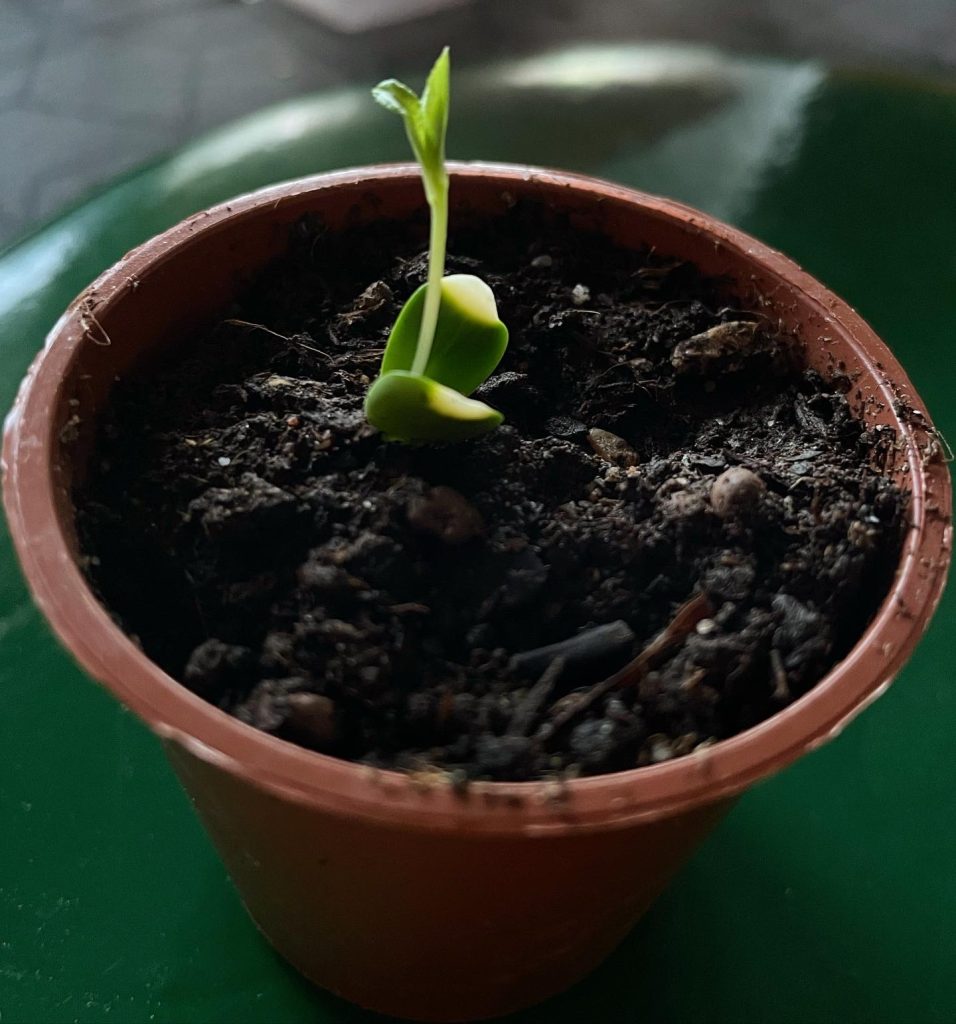
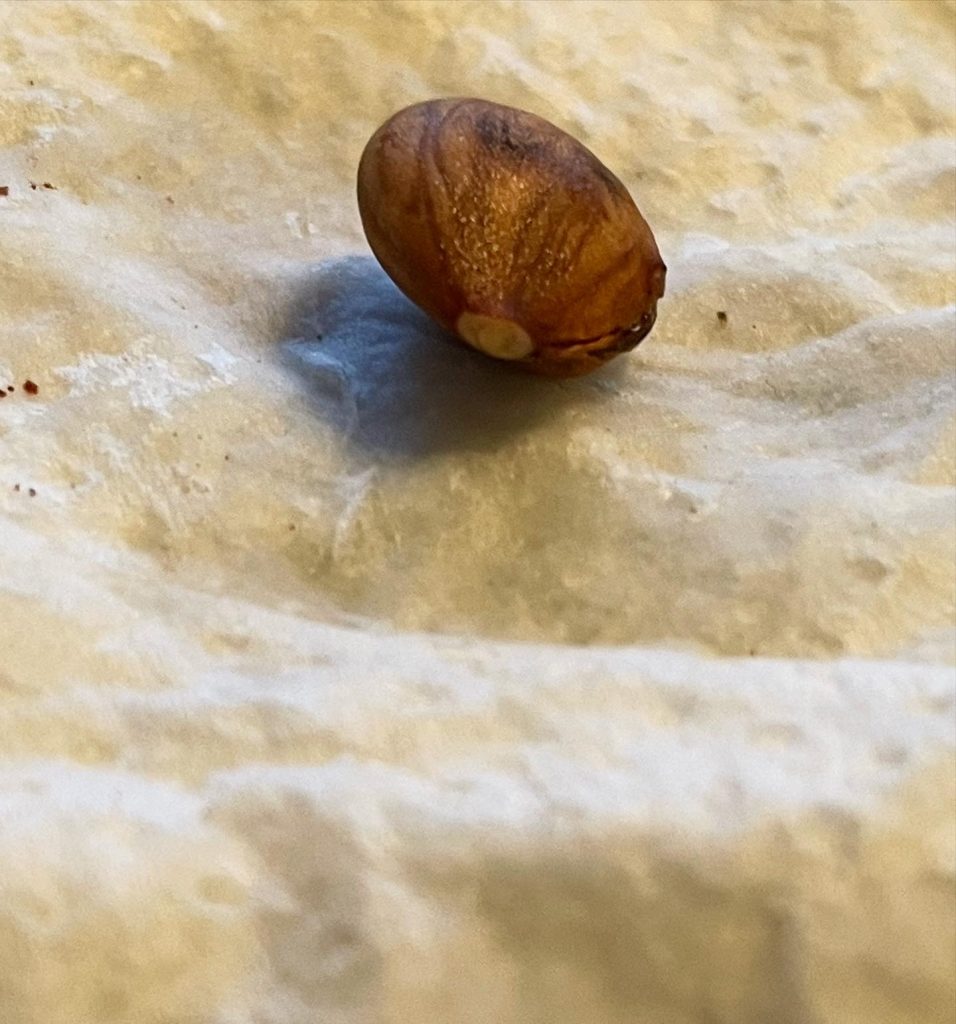
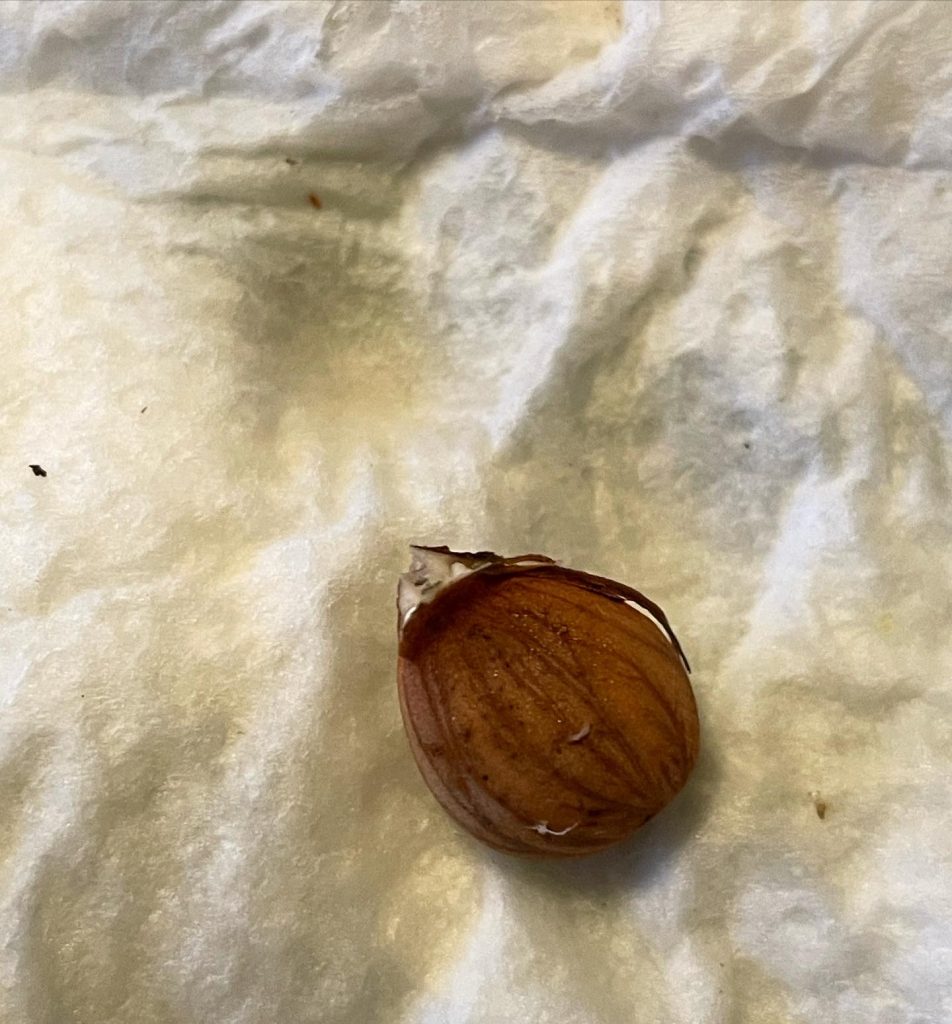
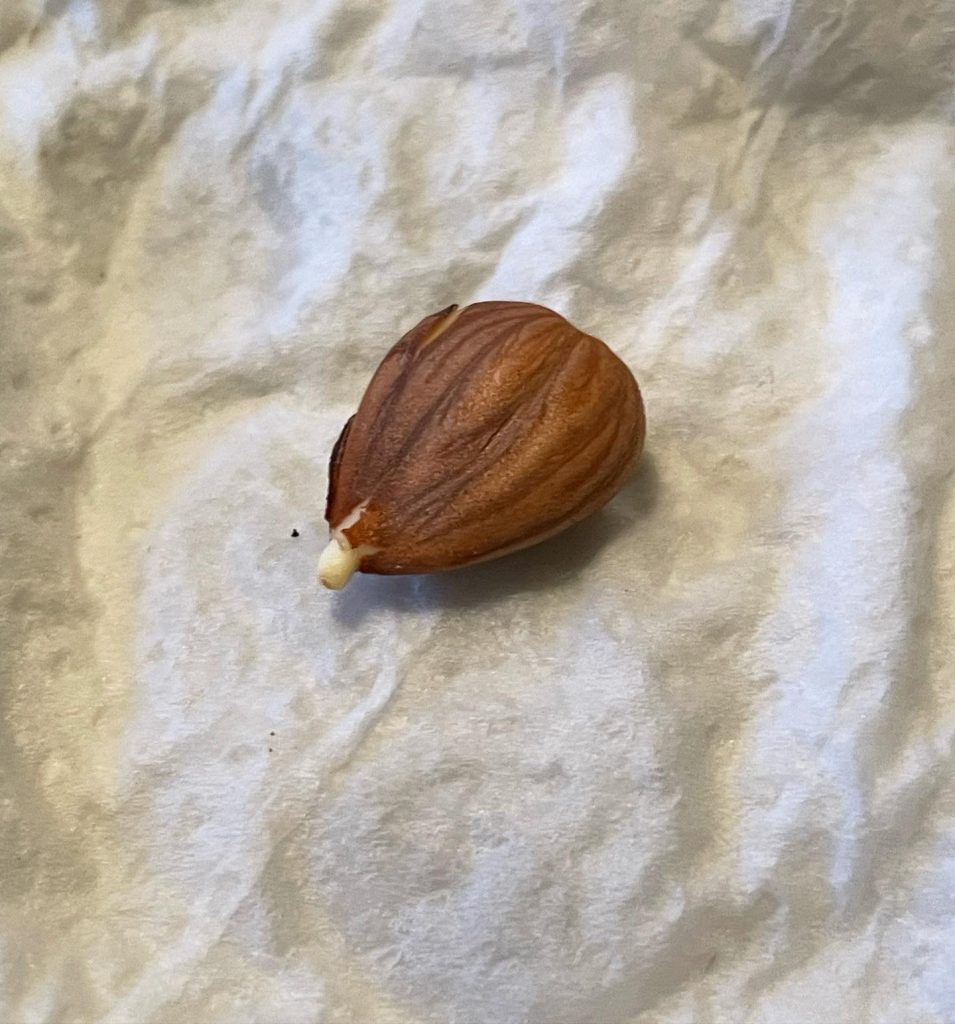


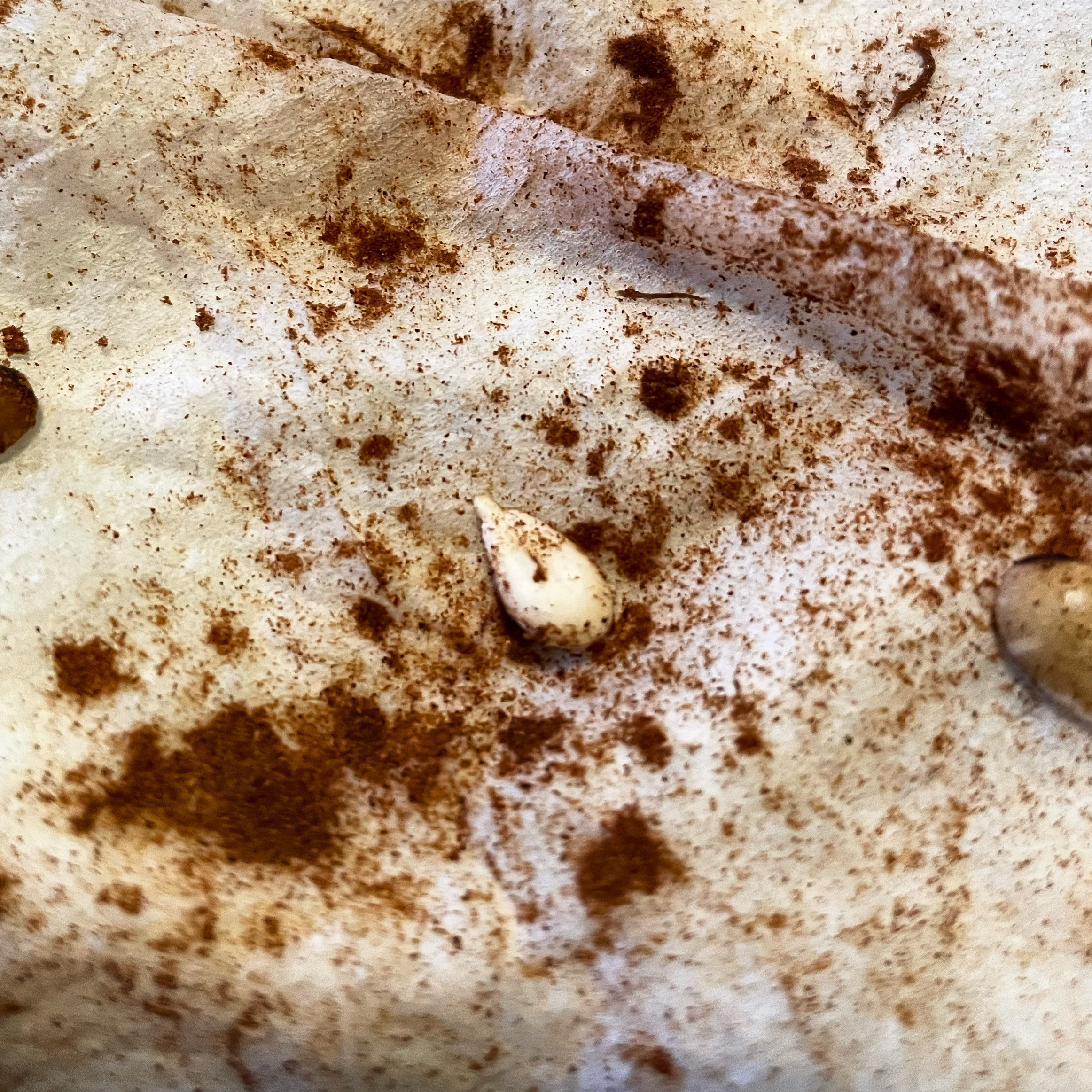
Planning and preparing
I have been planning my pantry and the canning I need to do this season. I have figured out which annual staples I need to grow and how I can maximise my space to grow as many varieties and as much of them as possible.
It’s been months since I last had access to good onions and garlic. I bought a lot in bulk when they were last in season – last fall and winter – and since I ran out, I have relied on my own leeks and green onions instead. As well as fermented garlic from my annual kimchi. This year I want to grow and preserve as many onions, leeks, green onions and garlic bulbs as I can.
I have pre-sown my onions and now I need to get them in the soil. You can’t buy seed garlic until this fall, and I want to grow them now. So as an alternative, I will plant organic garlic from the grocery store. I ordered a bunch of bulbs and I will plant the cloves next week.
Food preservation
The harvested berries have been frozen. The leafy greens have been blanched and frozen in portions. The herbs have been dried.
Other progress:
All of the potatoes are growing well. The pot where I only planted potato sprouts have now grown potato greens, so they’re also doing great.
The pumpkin and squash plants have a ton of flowers and a few fruits already.
The corn plants and bean plants are doing well.
The tomatillo plants have grown large. Some tomato plants and some chili plants have begun to flower.
And that is all for week 26. See you next Sunday!
Discover more from Desoullife
Subscribe to get the latest posts sent to your email.
